- Anatomical terminology
- Skeletal system
- Joints
- Classification of joints
- Joints of skull
- Joints of spine
- Joints of lower limb
- Joints of pelvis
- Hip joint
- Knee joint
- Tibiofibular joints
- Joints of foot
- Muscles
- Heart
- Blood vessels
- Lymphatic system
- Nervous system
- Respiratory system
- Digestive system
- Urinary system
- Female reproductive system
- Male reproductive system
- Endocrine glands
- Eye
- Ear
Ankle joint
The ankle joint (also talocrural joint; Latin: articulatio talocruralis) is a cylindrical-shaped synovial joint. It is a complex hinge-type joint formed between the bones of the leg and foot - tibia, fibula and talus. Therefore, the ankle joint marks the transition between the foot and the leg.
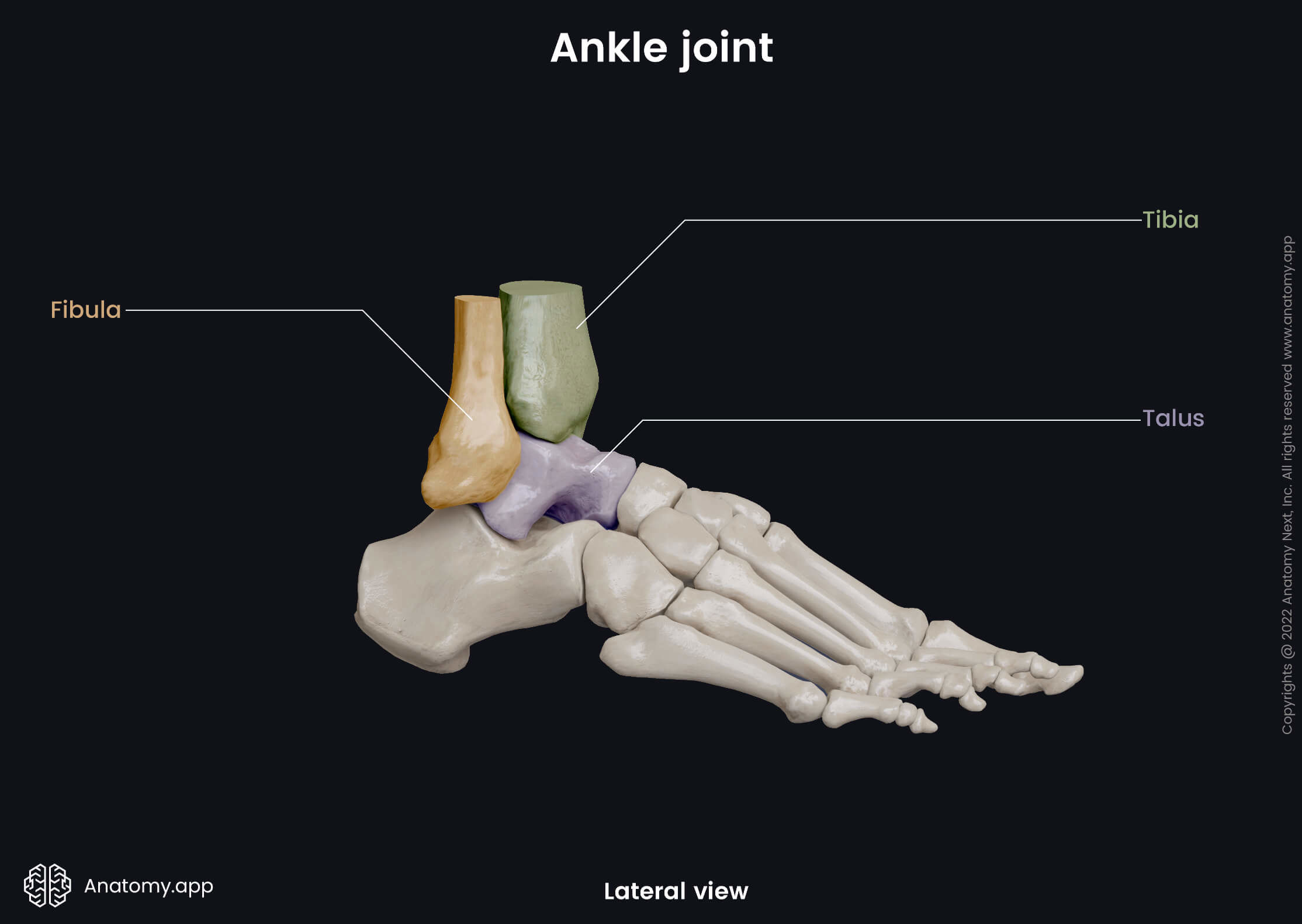
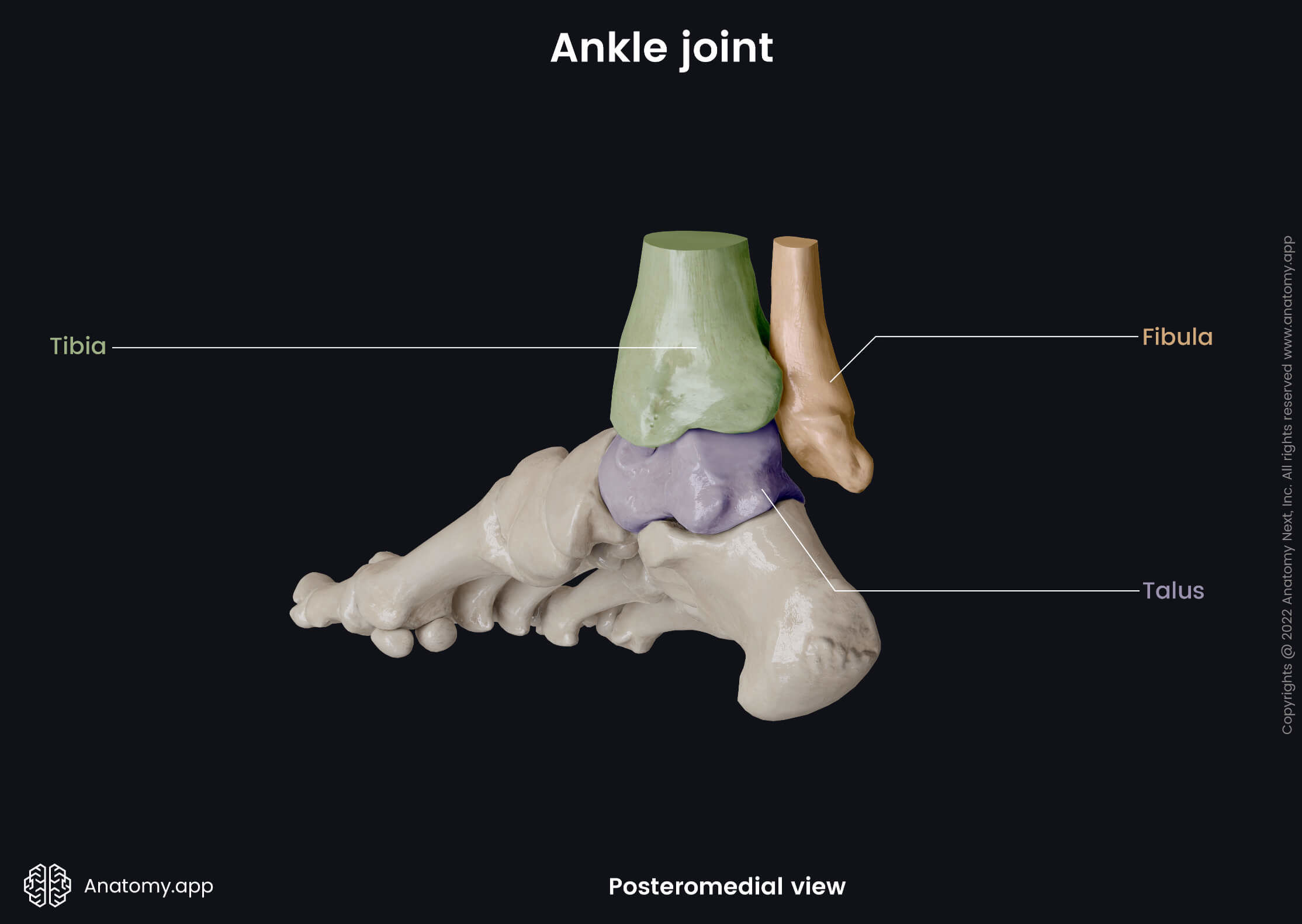
Articulating structures of ankle joint
The articular surfaces of the ankle joint are as follows:
- Superior articular surface of the talus
- Inferior articular surface of the tibia
- Medial malleolar surface of the talus
- Medial malleolar articular surface of the tibia
- Lateral malleolar surface of the talus
- Lateral malleolar articular surface of the fibula
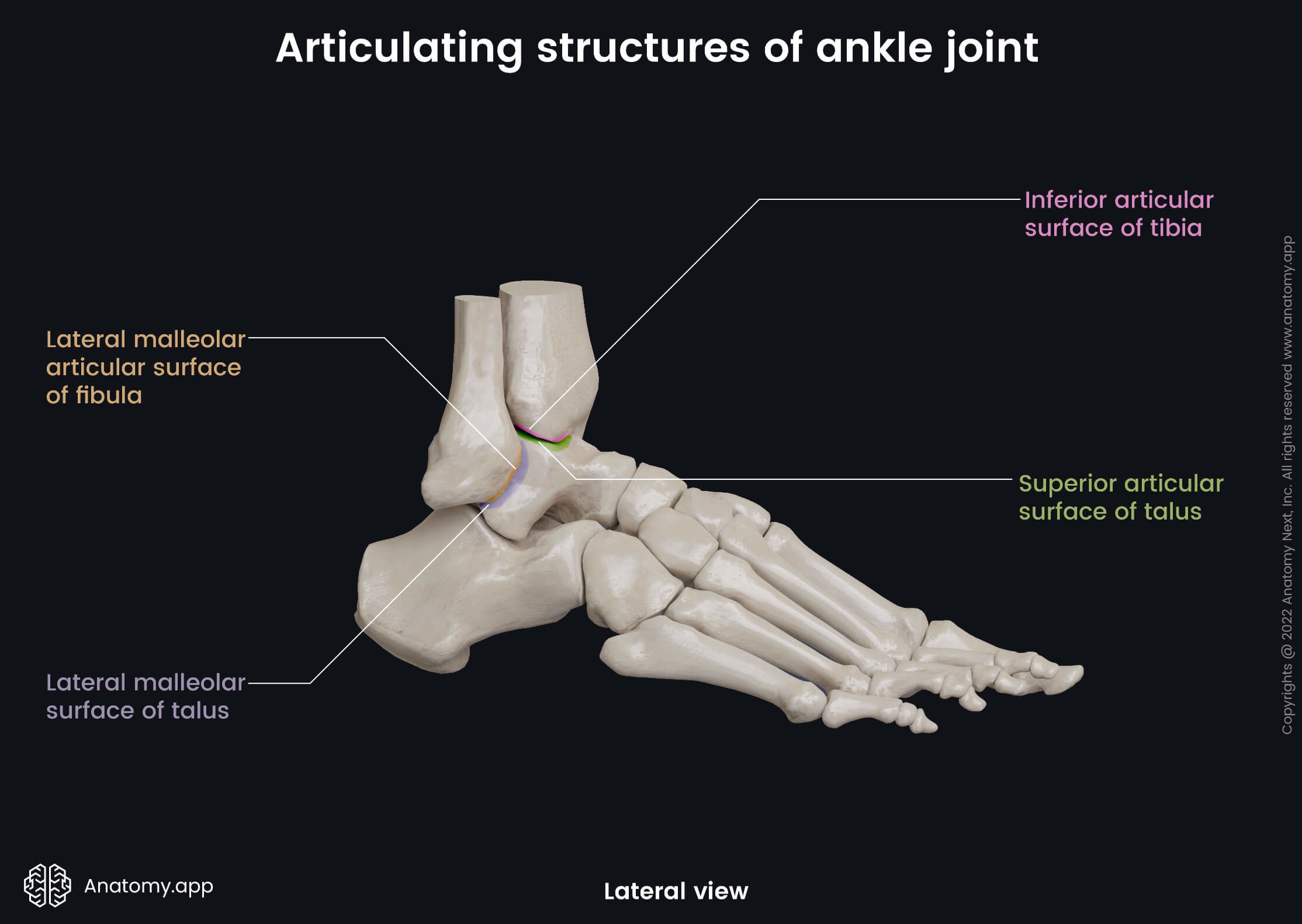
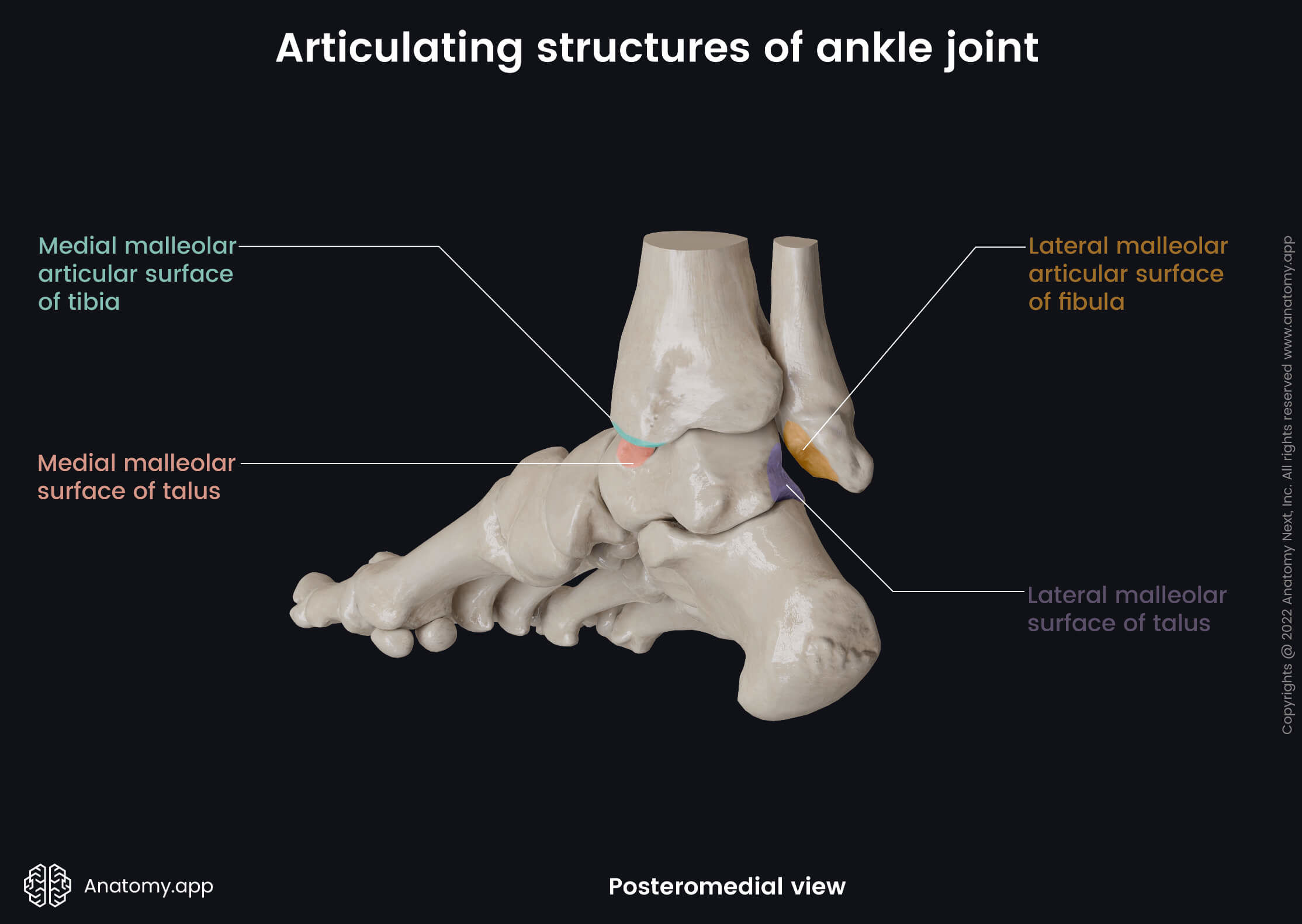
Joint capsule
The ankle joint is surrounded by the fibrous joint capsule. It is attached to the margins of the articular surfaces of all bones and the neck of the talus.

Ligaments of ankle joint
The bones of the ankle joint are bound together by two strong ligaments:
- Medial collateral ligament (or the deltoid ligament) - it is attached to the medial malleolus and consists of four ligaments (anterior and posterior tibiotalar, tibionavicular and tibiocalcaneal); all ligaments stretch from the tibia to the bones of the foot;
- Lateral collateral ligament - it is connected to the lateral malleolus and consists of three separate ligaments (anterior and posterior talofibular and calcaneofibular ligaments).
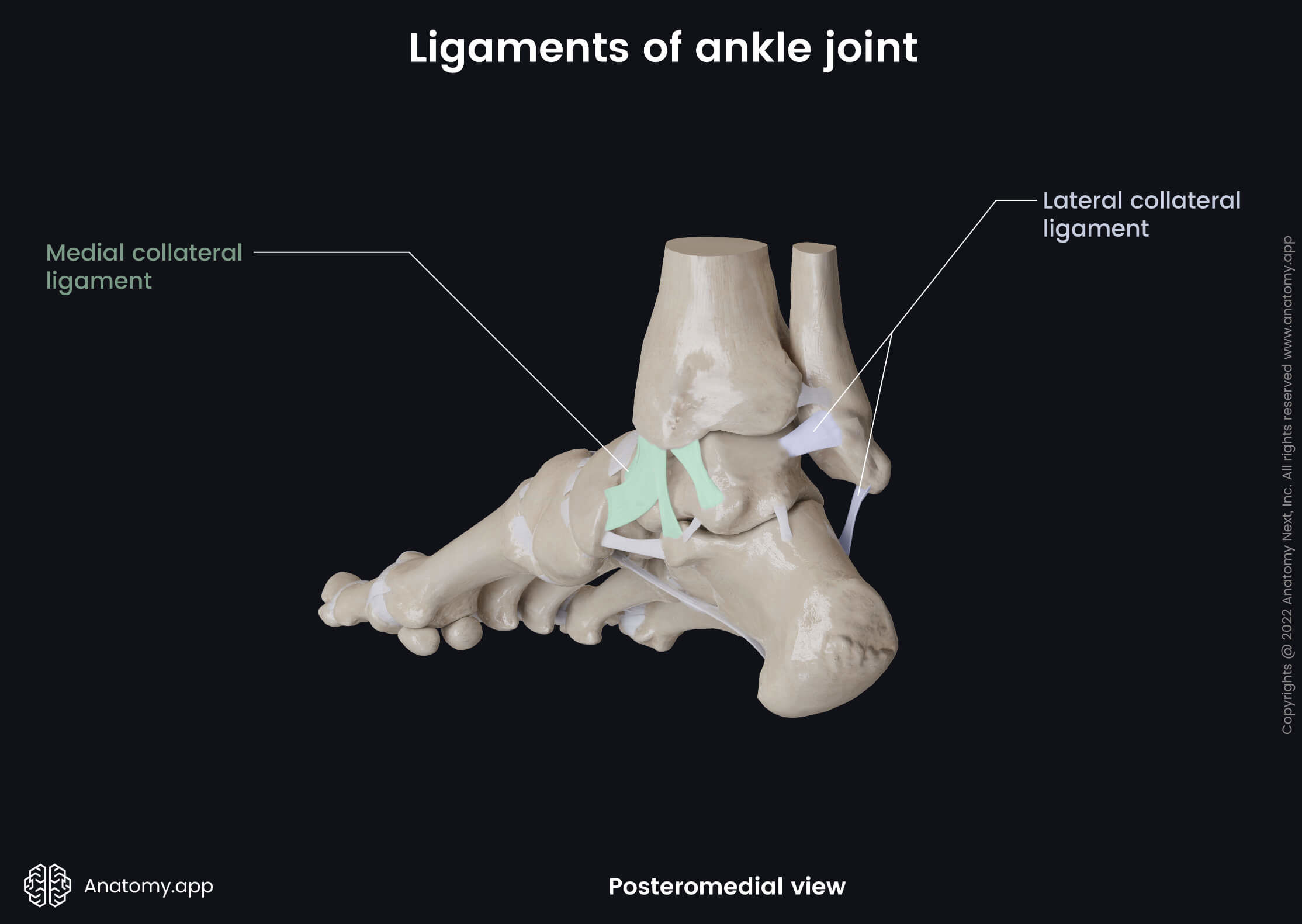

The anterior tibiotalar ligament extends from the tibia to the head of the talus, while the posterior tibiotalar ligament streches to the posterior end of the body of the talus. The tibionavicular ligament connects the tibia with the navicular bone, and the tibiocalcaneal ligament links the tibia with the calcaneus.

The anterior talofibular ligament of the lateral collateral ligament is situated between the lateral malleolus and the head of the talus, while the posterior talofibular ligament stretches between the lateral malleolus and the posterior end of the talus. The calcaneofibular ligament is situated between the lateral malleolus and the lateral surface of the calcaneus.
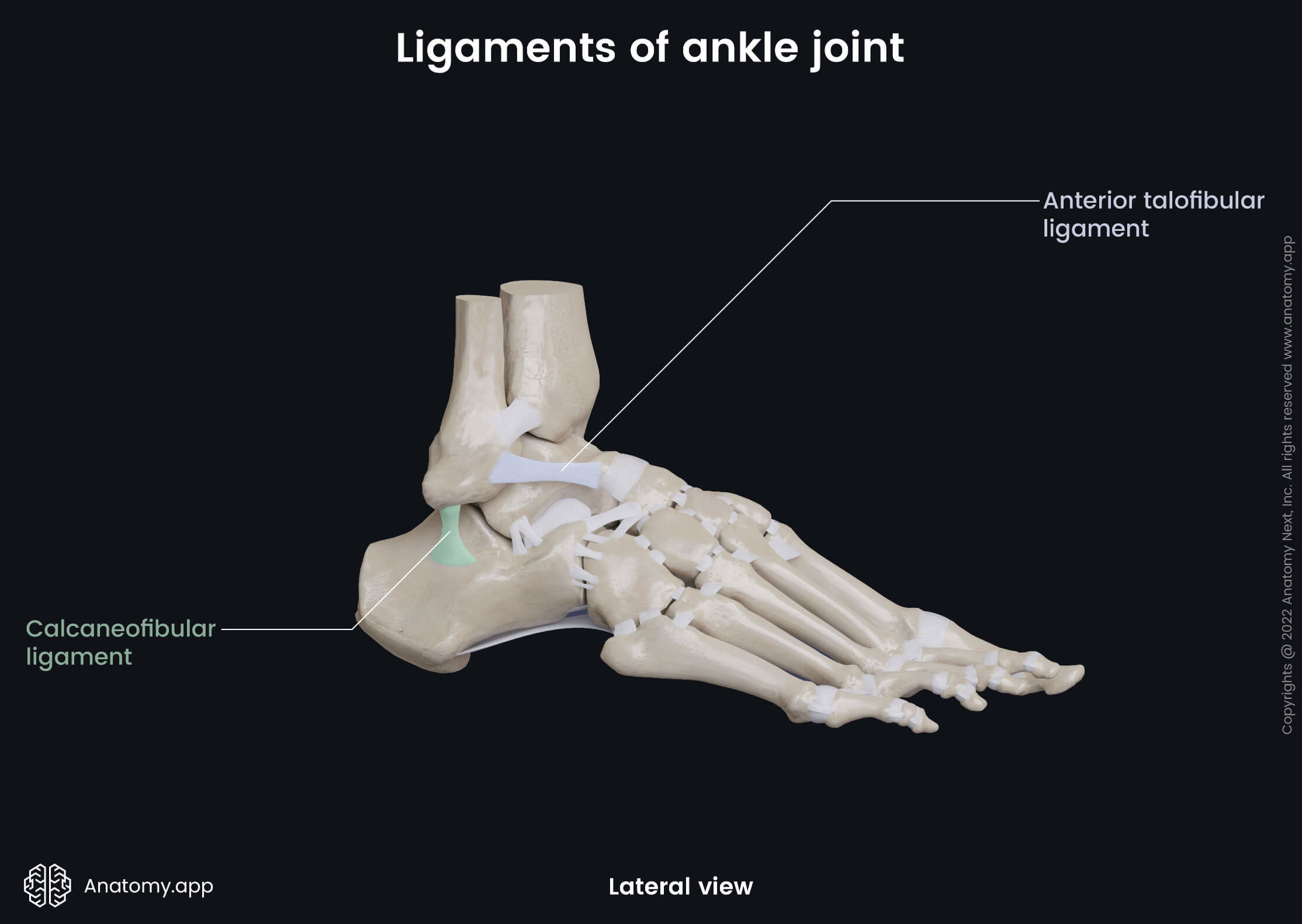
Movements of ankle joint
The ankle joint is a uniaxial joint. Therefore, it permits two movements: